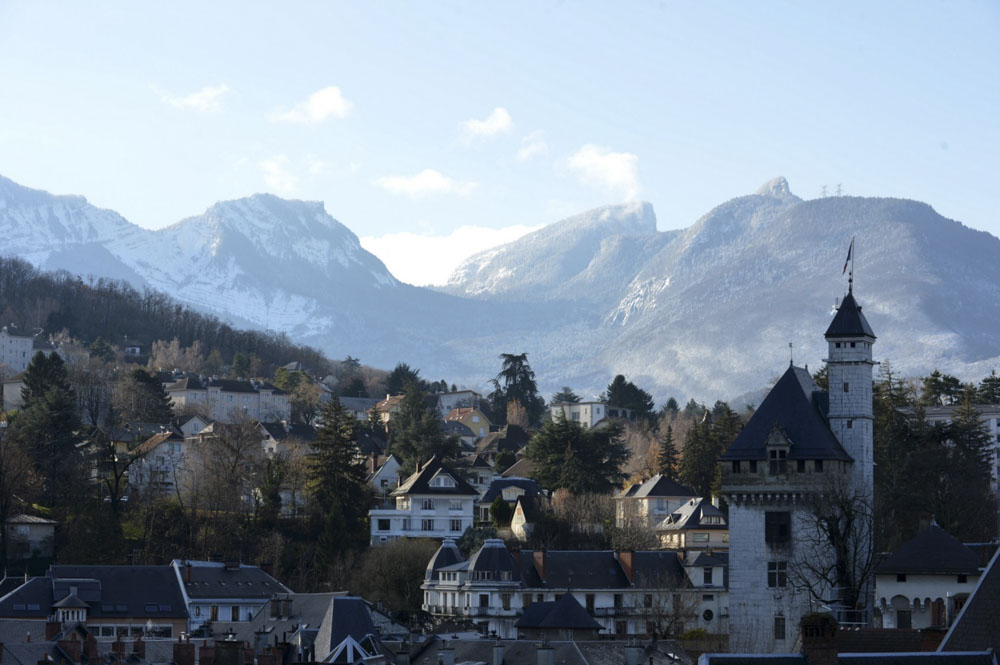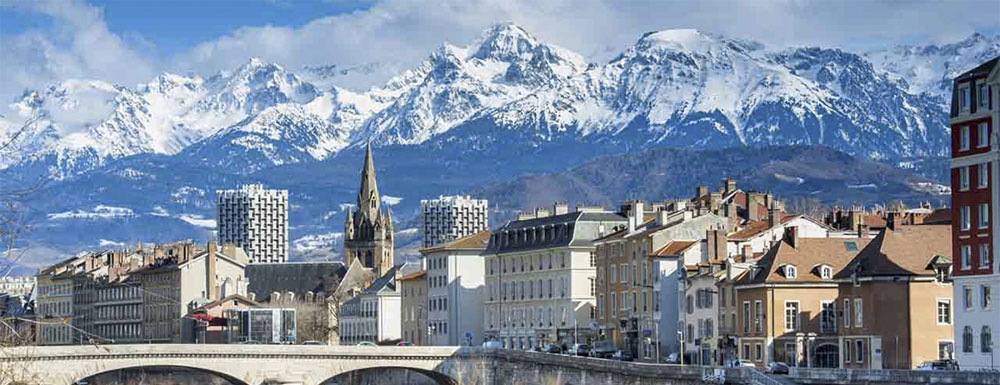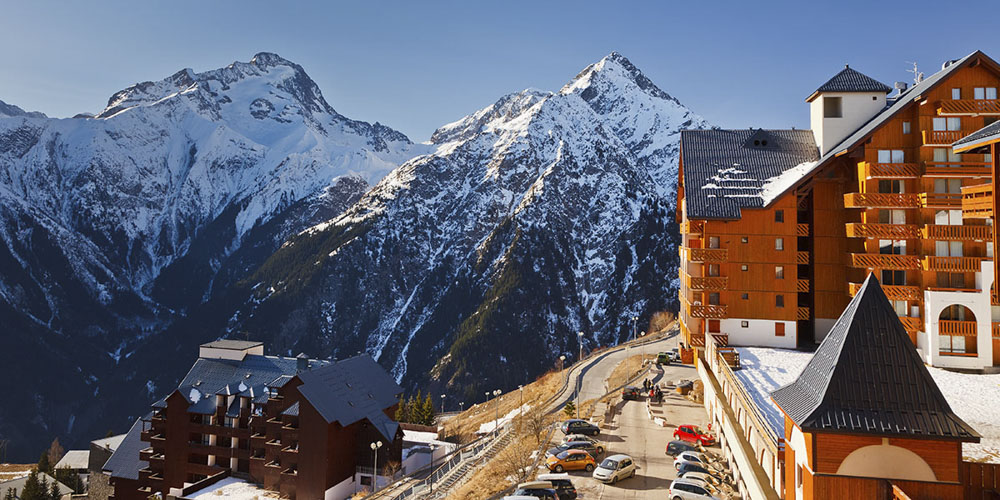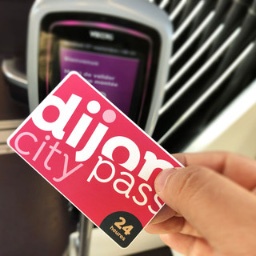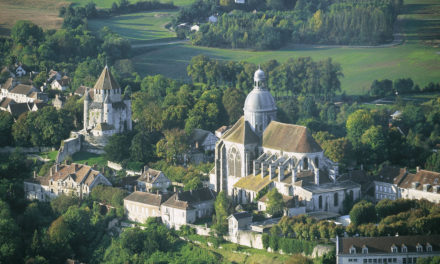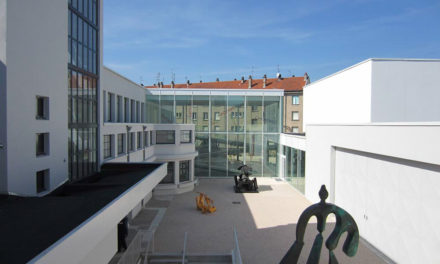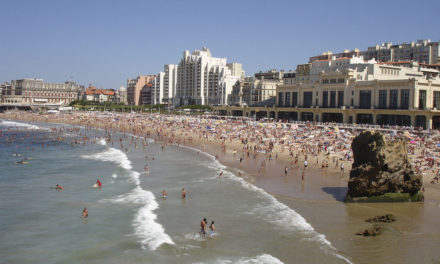In Alpine-fresh Chambéry, the long backs of mountains and the odd jagged peak are visible at the end of many a street. Regional symbols of Savoie pride stand out around town, notably the regional flag, a white cross on a red background, similar to the Swiss one (you can tell them apart by the fact that the arms of Savoie’s cross reach right to the edge of the flag, unlike with the Swiss), plus a bellicose heraldic black lion, while various melodramatic monuments pay homage to Savoyard heroes.
Book a Hotel in Chambéry
History 1
Chambéry first acquired political importance during the 13th Century, when it was suddenly made regional capital after Count Thomas I of Savoy bought the place. Incidentally, in the 13th Century, Pierre II of Savoy ordered the building of the Savoy palace in London (now site of the Savoy Hotel) and his brother Boniface became Archbishop of Canterbury.
A line of counts by the name of Amédée saw to the considerable development of town and region from the 14th century. For a time, the house of Savoy controlled an Alpine territory and lucrative Alpine passes going all the way from Lake Geneva to the Mediterranean. Amédée VIII acquired Geneva and Piedmont for the family before abdicating and retiring to his castle of a monastery, Ripaille, by Lake Geneva.
Most famously, in 1453, the dukes of Savoy came by a shroud said to have covered Christ’s dead body. Displayed in Chambéry, it drew large numbers of pilgrims. But the expansionist French monarchy was pressing at the gates and in 1536, King François I briefly took Chambéry. The then duke fled to Turin. Duke Emmanuel Philibert regained Savoy’s independence in 1559, but by 1562, Turin officially became capital of the duchy and the shroud was moved there in 1578, even though Chambéry remained an important administrative centre, keeping the regional senate and the ducal treasury.
French troops continued to harrass Chambéry, while in the 1740s a Spanish army devastated parts of the town. Victor-Amédée III had much of the castle rebuilt. The French came back in force during the Revolution and made Chambéry capital of the large, if shortlived, département of Mont-Blanc. After Napoleon’s defeat, the Savoyards regained control of their territories. Meanwhile adventurer General Benoît de Boigne had avoided the European upheaval altogether, fighting in India and making a considerable fortune there, part of which he ploughed back into civic provisions for Chambéry. But the long-proud independence of Savoy was reaching its end. First incorporated into a united Italy, the limited number of Savoyards with the vote then agreed overwhelmingly to a political arrangement made between Emperor Napoleon III and Cavour, and Savoie became French.
History 2
The pleasingly compact historic kernel of Chambéry is encased in broad, busy boulevards. Start a tour by the majestic, white-stoned Gothic castle of the dukes of Savoy (t 04 79 33 42 47) with its imposing machicolated tower. Another striking part of the complex, the aloof-looking Sainte Chapelle, is where the Turin shroud once lay. Despite a damaging fire, the chapel has preserved some fine 16th-century stained glass, although Christ changes face several times.
Place du Château below is overseen by particularly grand mansions and the arresting statue of the passionate de Maistre brothers, local writers who made quite a stir in the Revolutionary period. Rue de Boigne, a major arcaded shopping avenue of pink fronts, leads straight as an arrow from this statue to Chambéry’s most famous monument, the amusing column of the elephants topped by Benoît de Boigne.
Back with Place du Château, further picturesque historic streets lead away from it into the town centre. Take stocky Rue Juiverie or curving Rue Basse du Château. Place St-Léger is the most vibrant square in the centre, with its pinkish cobbles, its fountains, and its characterful façades, their shutters bringing to mind Alpine chalets. Explore the maze of alleyways that lead off the square; you may stumble across the odd trompe l’œil decoration, a Chambéry speciality. One end of Place St-Léger, Rue Croix d’Or, lined with some of the grandest old houses in town, has a fine selection of shops. These continue along Rue d’Italie beyond the fancy 19th-century theatre, lit up at night to flattering effect, like so much of central Chambéry.
In a square tucked away from immediate view between Place St-Léger and Rue Croix d’Or, Chambéry’s cathedral originally formed part of a Franciscan abbey, built in the late-Gothic period in rather sober style, apart from the flamboyant door. But brace yourself for the dizzying trompe-l’œil tracery splashed all over the interior, like the campest neo-Gothic wallpaper. These embellishments were added in the 19th century by the artist Vicario. Fragments of older wall paintings have survived while the treasury includes beautiful items.
The substantial regional museum, the Musée Savoisien (t 04 79 33 44 48), sprawls across the rest of the former Franciscan monastery. It contains displays going back to prehistoric communities that settled along the nearby Lac du Bourget some 3,000 years ago. The Gallo-Roman section contains lots of little finds too. Moving swiftly through the layers of Savoie civilisation, one level is devoted to paintings many of which have connections with the region, the explanations filling in pieces of Savoyard history. Further on whole sections of the museum are given over to an interesting display of Savoy rural communities and to the Second World War.
The wide Boulevard du Théâtre behind the museum leads to the De Boigne column, with its curious bottomless elephants. Boulevard de la Colonne leads on to several grandiose buildings, including the Musée des Beaux-Arts (t 04 79 33 75 03) opposite the law courts. Its Italian collections are particularly rich, a strong reminder of Savoy’s connections across the Alps. A few well-known Flemish and French artists also get a look in.
Rue Denfert-Rochereau leads from the theatre out to the recently transformed Quartier Curial by the boulevards. An attempt has been made to freshen up massive arcaded barracks, while the curves of the theatre are a striking contemporary creation by architect Mario Botta.
Rousseau
A steep two miles up from this part of the town leads you into almost unspoilt countryside at the Maison des Charmettes (t 04 79 33 39 44), briefly the country home of Chambéry’s most famous 18th-century resident, Jean-Jacques Rousseau, and still surrounded by little sloping orchards, with open views of the mountains. The brilliant young Rousseau had run away from an unhappy situation in Geneva at the age of 16 and was taken into the bosom of the rather more mature Madame de Warens, an immensely influential figure in his life. They lived both in Chambéry and here from 1731 until 1736. In these idyllic surrounds, he spent some of his happiest times and, most importantly, developed his magasin d’idées, from which his radical thinking sprang through his voracious studies. The simple interiors and garden somehow reflect Rousseau’s idealising works, credited with bringing the world the rights of man, and damned for serving as creed of the vilest 20th-century totalitarian regimes.
For more information on Savoie’s great cities and lakes, read the Cadogan guide to the Rhône-Alpes.
Copyright text : Philippe Barbour 2011

